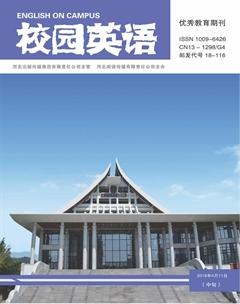Applying Narrative Theory to the Translation of Journalistic Texts
乐迁
1. Introduction
‘It is axiomatic that politics pervades every aspect of human thought and activities (Newmark, 1991, p.146). Politically speaking, journalistic texts are perhaps the most sensitive texts, as they can shape and mediate, rather than mirror, reality. Journalists always find themselves rewriting translations to comply with the rules and practices of the medium in which they work (Bielsa and Bassnett, 2009). This essay aims to apply narrative theory to the study of manipulation in the translation of journalistic texts.
2. Narrative theory
2.1 Introduction to narrative theory and framing
We live in a world of narratives. People cannot make sense of the world until it is put in a narrative mode. Baker defines narratives as ‘public and personal stories that we subscribe to and that guide our behaviour (2006, p.19).
Source text authors can express their own narratives and translators can signal their own views towards these narratives through employing various devices. These devices can be summarised as framing which allows different groups to foreground their own narratives, and challenge and downplay those proposed by others. Without frames, social life will appear to be random facts (Manning, 1992). In the following sections, how narratives are framed in news translation to mediate and construct reality will be analysed.
2.2 Relationality
Narratives do not exist before people relate facts in a certain order (Baker, 2006). However, people do not frame these facts randomly; they need to relate facts logically, and this characteristic of narratives is called relationality. The device of relationality can be drawn on to infuse a certain narrative or ideology in an implicit manner into public or meta-narratives, ‘thus obscuring or downplaying its relational load in the source environment (Baker, 2006, p.66). In the following paragraphs, how relationality is employed to frame a narrative will be analysed.
Example 1
Source text: This advantage stems from four forces that first emerged in the 1970s …
Translation: 这一优势来自上世纪70年代粉墨登场的四股力量……
In this example, ‘four forces is not translated as its equivalent, namely ‘四方面的力量, and ‘first emerged is translated as ‘粉墨登台 instead of a neutral term ‘出现于 . These choices aims to frame a condemning tone into these narratives. If evaluating American capitalism in the long run, readers may find that these forces are actually causes of future financial crisis. Therefore, a disapproving tone needs to be framed into the narrative to meet the general publics expectations.
2.3 Framing by labelling
Framing by labelling refers to ‘any discursive process that involves using a lexical item to identify a person, place, or any other key element in a narrative (Baker, 2006, p.122). The contents to be labelled include titles and paratexts. By labelling these key contents, a narrator can ‘promote and legitimise his version of reality (Baker, 2006). In the following paragraphs, framing by labelling will be investigated.
Example 2
Source text: Capitalism Works
Translation: 论资本主义是否行得通
The source text is the title of the whole text. In the original narrative, the author strives to present capitalism in a positive light. Adapted from a definitive sentence, the Chinese title, on the contrary, can evoke a narrative that is very familiar to the Chinese reader: capitalism is inherently exploitative and immoral, and this problematic economic system does not work. By relabeling the title, the translation foregrounds the issue of whether or not western capitalism works and frames the narrative as part of the Chinese socialist discourse. Framed in this way, the narrative fits into the ideology of the target society.
3. Conclusion
Journalistic texts can mediate and shape public and personal narratives. The above-mentioned sections have discussed how manipulation in news translation can be evaluated from the perspective of narrative theory. News translation differs from many other kinds of translation as it involves editing and manipulation. Employing various devices, translators can frame their personal or institutional narratives into public narratives and thus mediate all sorts of narratives.
References:
[1]Baker,M.,(2006).Translation and Conflict:A Narrative Account,Abingdon:Routledge.
[2]Bielsa,E.and Bassnett,S.,(2009).Translation in global news.1st ed.London:Routledge.
[3]Manning,P.,(1992).Erving Goffinan and Modern Sociology, Cambridge:Polity Press.
[4]Newmark,P.,(1991).About translation.1st ed.Clevedon: Multilingual Matters.
[5]Social Constitution of Identity,in Craig Calhoun(ed.)Social Theory and the Politics of Identity,Oxford UK & Cambridge USA:Blackwell,37-99.

